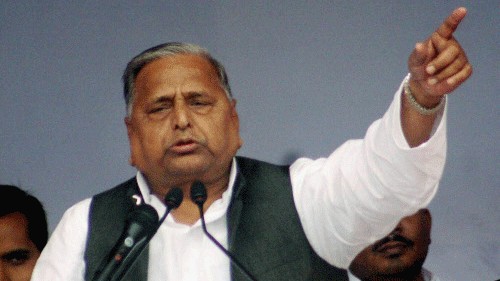
Former Samajwadi Party chief Mulayam Singh Yadav.
Credit: PTI File Photo
Babri masjid, which stood on the land many believed to be the Ram Janmabhoomi, was demolished after sentiments in the country flared as a result of the Ram Janmabhoomi movement launched by the Sangh Parivar.
The Ram Janmabhoomi movement is about years of agitation and conflict since 1990 which changed the course of modern India's history and started a bitter battle between different factions who struggled to claim supremacy over the 'disputed land'.
Today the Ram temple stands constructed on said land, after the landmark 2019 Supreme Court decision, bringing to an end a 500-year demand by Hindus. Track our live coverage of the temple consecration event here.
In September 1990, the Vishwa Hindu Parishad (VHP), the Rashtriya Swayamsevak Sangh (RSS), the Bhartiya Janata Party (BJP) and Bajrang Dal campaigned for the Ram temple to be built at the Ram Janmabhoomi site.
The situation took a grave turn when BJP leader L K Advani conducted a 'rath yatra', aiming to conclude it at Ayodhya.
This is where Uttar Pradesh's then-chief minister Mulayam Singh Yadav comes into the picture as he, working with the Centre, decided to thwart the procession and announced a complete lockdown in the state.
Acting upon government orders, the security personnel fired on the crowd on October 30. Many people died from head wounds and there was a stampede at the Sarayu Bridge, which killed more people.
Following the firing, the political climate became more heated as tensions escalated. On November 2, three days later, the karsevaks again started marching towards the disputed structure. with leaders such as Uma Bharti, Ashok Singhal, and Swami Vamdevi.
Security personnel with guns were deployed on the houses near the structure who kept announcing that no one was allowed to go towards the disputed area. But the karsevaks continued to move forward, compelling the police to open fire again.
As per state records at least 17 were killed in these clashes.
The firing led to widespread anger against Mulayam Singh who faced a political backlash.
Years later, Mulayam expressed his regret for ordering the firing on the kar sevaks, admitting that it was a mistake.